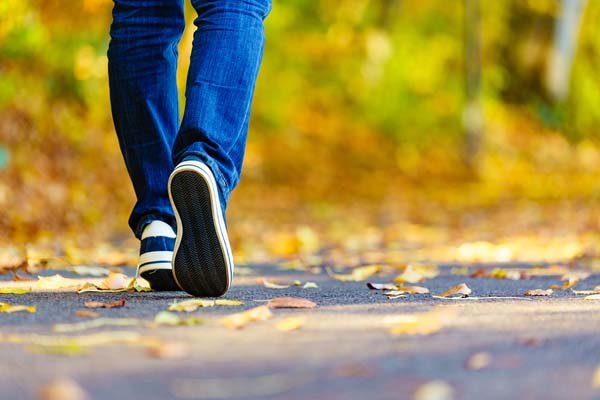In the current quaran-times, it’s true that most folks’ movement routines have been disrupted or changed in one way or another, whether losing a commute to work, thinking more deliberately about when to leave home, or exercising at home or outdoors rather than the gym. With limited destinations, this time also presents the opportunity for a deeper appreciation and consideration of human transportation in its most natural form, that is, walking.
For many of us, walking may be an easy and relatively mindless act. Perhaps some are more attuned to the action of walking with devices or apps to monitor fitness and count steps. Then, there are those humans who are in rapid transition from a four-legged reality to a two-legged reality, tumbling around with bumps and bruises to prove it. Still for others who are well past the crawling-to-walking phase, just putting one foot in front of the other may take a great deal of exertion and intention. Whatever your orientation around bipedalism, consider the following ways that ambling around is helping your mind.
Increased oxygen flow to the brain
When walking, deeper breaths from an increase in heart rate deliver more oxygen to the blood. With increased heart rate also comes increased circulation to get that oxygenated blood to the brain (Ryerson, 2019). And a properly oxygenated brain functions optimally!
Increased blood flow to the brain
For a long time, it has been known that increased heart rate from walking and other aerobic exercise increases oxygen delivery to the brain. However, recent studies demonstrate another way walking is beneficial to brain health. One study found that the impact of feet on the ground creates a pressure wave through the arteries that physically affects blood flow to the brain (Experimental 2017). When the brain receives better blood flow, the person can experience a sense of well-being during walking itself as well as better brain function and perfusion.
Better creative thinking
In 2014, researchers from Stanford University studied the effects of walking on creativity and found a sixty percent increase in creative output in individuals who walked on a treadmill or outdoors compared to individuals who were sitting down (Stanford University, 2014). Interestingly, the study found no changes in the creativity output when comparing environments. As long as people were walking, the creative juices were flowing!
Lower likelihood of cognitive impairment
One study examined the effects of one-mile daily walks on participants aged 70-90 years and found a volume-increase in certain brain areas, specifically the frontal lobe, which is responsible for problem-solving and reasoning (Wojtys 2015). The act of walking reduced the risk of cognitive impairment, such as dementia, by fifty percent in the study’s participants (Wojtys, 2015). Another study on the effects of walking in older adults found that daily, low-intensity walks were associated with an increase in the volume of the hippocampus, which functions as a center of learning and memory in the brain (Varma, Chuang, Harris, Tan, & Carlson, 2014).
The benefits of walking on your mental health can manifest no matter if you are pacing the rooms in your home, meandering on a forest trail, or getting those steps in grocery store aisles. So, maybe the next time you need to get somewhere in walking-distance, consider letting your feet do the work and your brain reap the benefits.
Click here to create a TPN.Health profile and gain access to a trusted, digital referral network as well as virtual CEUs and discussion panels featuring clinical experts in the behavioral health field.
References:
Experimental Biology 2017. (2017, April 24). How walking benefits the brain: Researchers show that foot’s impact helps control, increase the amount of blood sent to the brain. ScienceDaily. Retrieved from www.sciencedaily.com/releases/2017/04/170424141340.htm
Ryerson, J. (2019, March 18). How Walking Helps Your Brain. Retrieved from https://www.neurocorecenters.com/blog/how-walking-helps-your-brain
Stanford University. (2014, April 24). Stanford study finds walking improves creativity. Retrieved from https://news.stanford.edu/2014/04/24/walking-vs-sitting-042414/
Varma, V. R., Chuang, Y.-F., Harris, G. C., Tan, E. J., & Carlson, M. C. (2014). Low-intensity daily walking activity is associated with hippocampal volume in older adults. Hippocampus, 25(5), 605–615. doi: 10.1002/hipo.22397
Wojtys, E. M. (2015). Keep on Walking. Sports Health: A Multidisciplinary Approach, 7(4), 297–298. doi: 10.1177/1941738115590392
Image Credit: https://www.socialworker.com/extras/creative-work/keep-on-walking/
